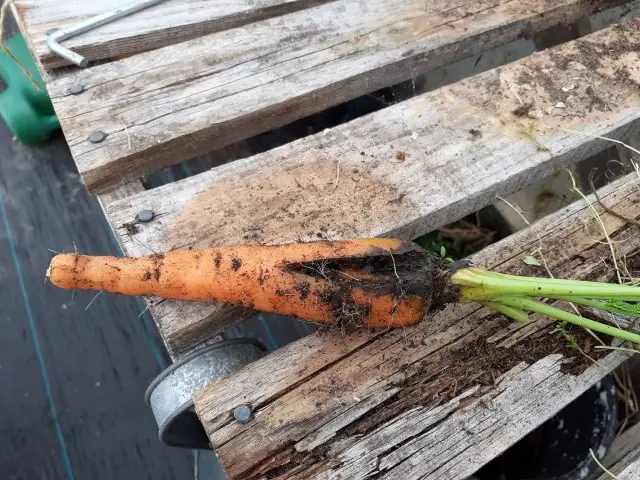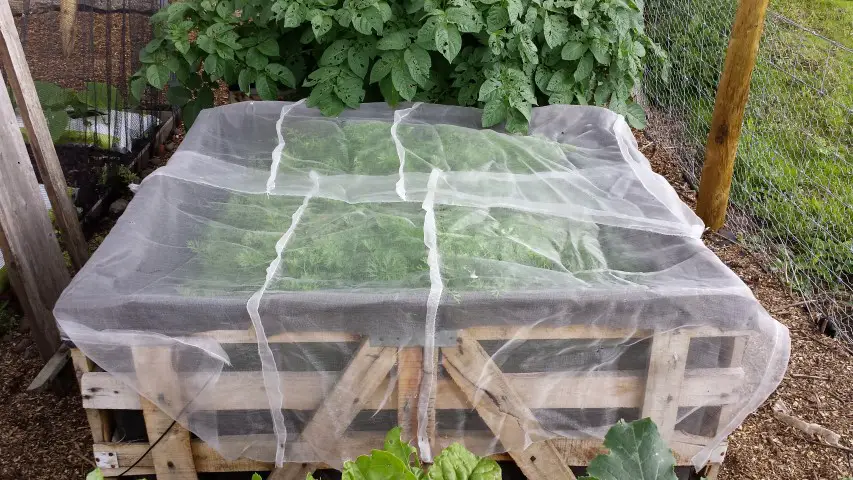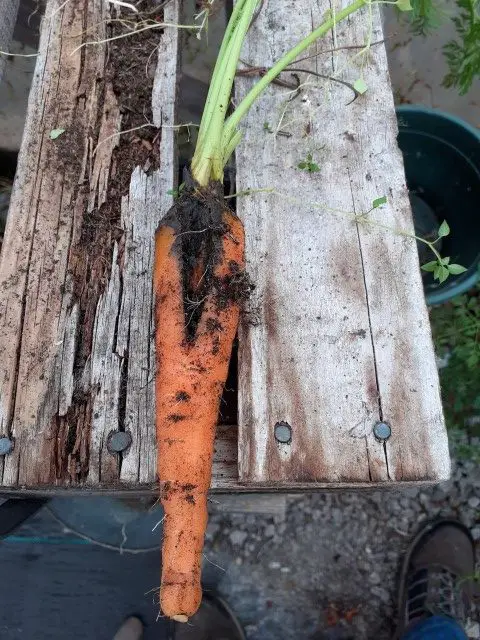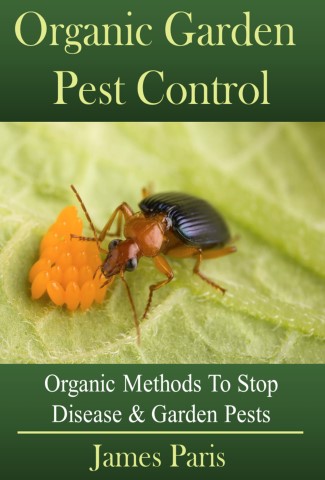
The tiny carrot fly (Chamaepsila rosae) is perhaps the biggest enemy of the carrot grower, and indeed a pest that can utterly destroy a whole carrot crop virtually overnight.
It stands to reason therefore, that every attempt must be made to prevent the carrot fly from gaining access to your precious crop.
Fortunately as devastating as the carrot fly can be to your carrots, they are not difficult to keep away – as long as proper steps are taken before it is too late to prevent the fly gaining access.
Basically there are 5 excellent ways to protect your carrots against this pest.
- Disguise the smell of the carrots: The fly is attracted to the carrots by the smell they emanate. Therefore many growers plant chives, leeks, garlic or onions around the carrot crop. The strong smell of onion hides the smell of the carrots from the fly. This tactic is often used in companion planting where plants are chosen that will protect or otherwise benefit each other in some way.
- Direct cover: Because the carrot fly is so tiny a normal mesh is just not small enough to keep it at bay. The solution to this is to use garden fleece. This has perforations small enough to keep out the fly and at the same time allow the ingress of water and light to your plants. Garden fleece is widely used for many applications even by commercial growers for its ability to keep out a host of pests from slugs to birds – and indeed flies.
- Plant them high: This is one of the benefits that comes with constructing raised beds that are over 18 inches high. The carrot fly is a low-flying insect that hugs the ground. It is widely considered that anything over 18 inches has a good chance of avoiding the predations of the carrot fly altogether. So if you have a high-level raised bed over this height you should be fairly confident of avoiding the fly – unless it gets carried on an updraught…
- Create a vertical barrier: If you are growing carrots in the ground or indeed a shallow raised bed, then you can always create a barrier to try and stop them. You can do this by putting a simple ‘fence’ of garden fleece, polythene, or special carrot fly barrier around the area set to about 2 foot high. This works best in small areas no more than 4 foot wide by 8 foot long. This just increases the chance of the fly not being blown over the top of the fleece and into the carrot area.
- Avoid thinning: Thinning out the carrots not only exposes the carrot top to the fly, but also creates that carrot smell that attracts the fly. It is best to sow sparingly and avoid thinning altogether – especially if you have not protected your carrots in other ways.

What damage does the carrot fly do
The carrot fly itself does no damage at all – it is the grub that hatches out of the eggs that create the damage.
This is in the form of tunnels bored down the side of your carrots creating ‘ravines’ or scars usually about 2/3rds of the way down the roots.

The fly begins by laying eggs on the exposed top of the carrot root, and from that point the eggs hatch and the larvae eat their way down into the carrot.
Can you eat carrots with carrot fly? In theory yes you can, just cut away the affected part especially if the damage is minimal.
However they do not look pretty on the dinner plate!
Where do carrot flies live
The carrot fly tends to stay around areas where there is plenty of ground cover like low hedges, shrubs etc. And where they can get access to root crops, especially carrots that have been left in the ground with no protection.
The carrot fly season is from late Spring to the Autumn fall, so any crops planted a little later in the season have a better chance of avoiding the fly damage.
Other plants that are prone to carrot fly attack are Parsley, Parsnips and Celery.
Summary:
As devastating as this garden pest is to the carrot family, the good news is that fore-warned is indeed fore-armed.
As we see from the list above, it is not difficult to keep the fly away from your carrots altogether by just being aware of the potential problem and taking the appropriate steps to avoid it – and enjoy a healthy carrot crop.

